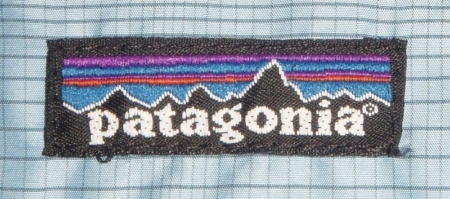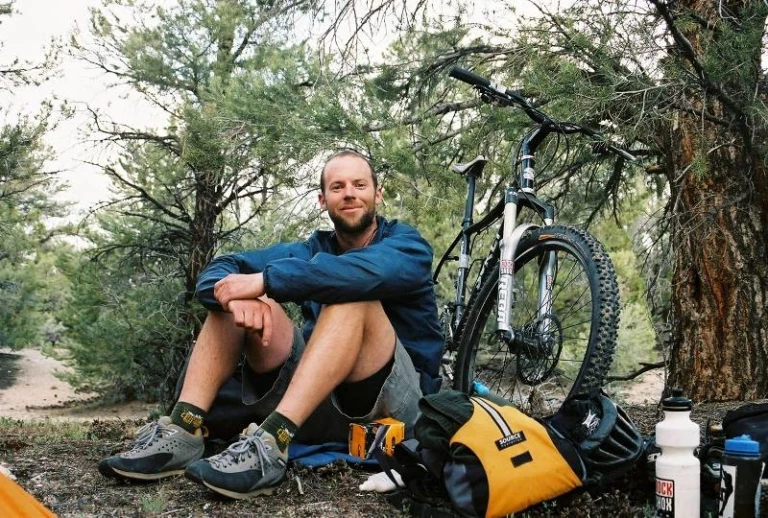What Can a Brand Name Mean? (And How Did Ours Come to Be?)
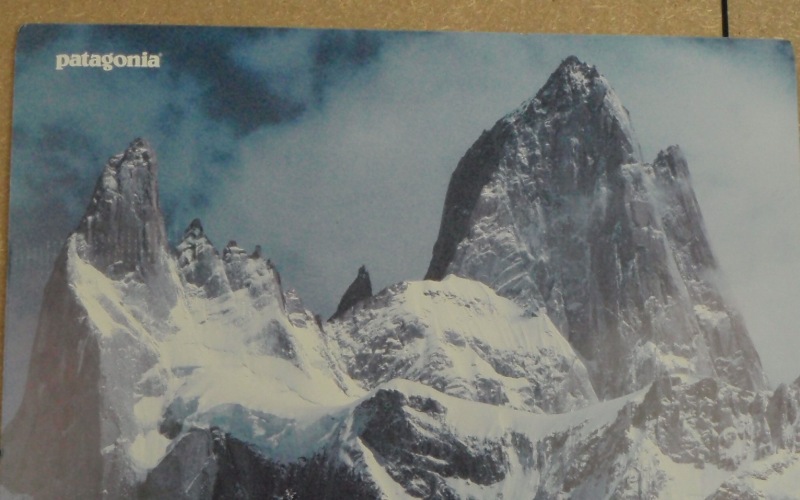
Mountain of Storms was released in 1968. It is a film about 5 friends who pile into an old van somewhere in California and surf, ski, and climb their way south toward the then still-mythical land of Patagonia, where they put up the first ascent of Cerro Fitz Roy’s Southwest Buttress, the so-called “California Route.”
Though the friends didn’t know it, Mountain of Storms paved the way for the modern-day adventure film, the type around which an entire industry, including events like Banff Mountain Film Festival, have been built. These guys were just out to have a good time and give their friends something more entertaining than slides to look at when they got back.
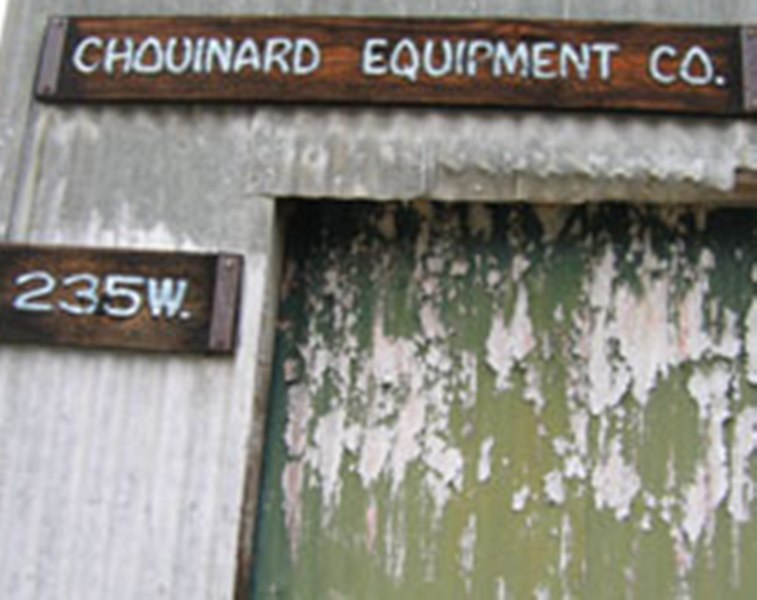
In addition to providing the inspiration for the journey documented in Mountain of Storms, in 1973 Chouinard Equipment chose the name “Patagonia” for its new clothing line.
As we began to make more and more clothes, we needed to find a name for our clothing line. Why not “Chouinard?” We already had a good image going, why start from scratch? We had two reasons against it. First, we didn’t want to dilute the image of Chouinard as a tool company by making clothing under that label. And second, we didn’t want our clothes to be associated only with mountain climbing.
To most people, especially then, Patagonia was a name like Timbuktu or Shangri-La, far-off, interesting, not quite on the map. Patagonia brings to mind, as we once wrote in a catalog introduction, “romantic visions of glaciers tumbling into fjords, jagged windswept peaks, gauchos and condors.” It’s been a good name for us, and it can be pronounced in every language.
In 1998, the New York Times published a story about Chouinard’s 30 years of ground-breaking business, in which the interviewer observes:
The paradox of Chouinard’s life, of course, is that he has made people desperately want to be ”out there.” He invented or perfected much of the gear and clothing that has made the wilderness accessible, a situation he laments. Ice axes that enable a climber to hoist himself on an ice floe and clothing that lets an alpinist stay warm and dry are products of Chouinard’s own grit and experience at the extremes.
Travel-writing site World Hum recently posted an essay by Tim Patterson, entitled “In Patagonia, In Patagonia.” As the title implies, Patterson’s essay is built around the odd paradox of finding oneself bedecked in Patagonia apparel while traveling in the land of its inspiration.
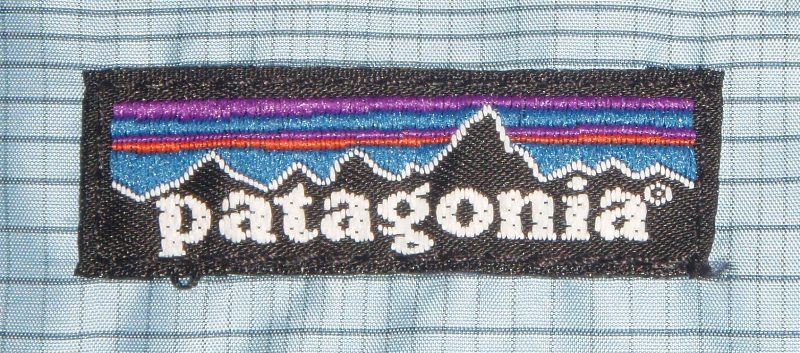
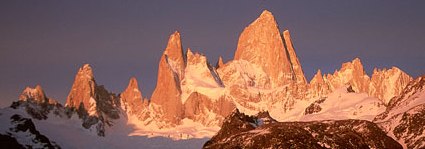
Patterson’s essay offers a unique and interesting critique; one not all-too-different than the self-critique we’ve begun with The Footprint Chronicles. While the Footprint Chronicles focuses on the physical impacts of conducting a business, Patterson’s questions about the “multilayered reality of place” are a call to consider our ideological impacts. Where the Footprint Chronicles asks us to consider the impacts of using recycled/recyclable polyester from oil, or compostable polyester from genetically modified corn; Patterson asks us to consider the impacts of calling attention to our places of inspiration. Brands, Patterson suggests, are more and more hitched simultaneously to dreams, emotions and very real places through the images they conjure in the course of doing business. And what kind of impact does this have? What kind of footprint, we’re asked, is left by an idea?
With Tim’s permission, we’re happy to post his essay here:
In Patagonia, In Patagonia
Buying clothes pains me. I would sooner trek naked through a leech-infested jungle than shop for shoes. But somehow, over the years, I’ve amassed an extensive wardrobe of Patagonia brand clothing.
The fleece from an ex-girlfriend. The windbreaker I found secondhand. The ski pants I “borrowed” from my college roommate. The thermal underwear from Santa. The socks I treated myself to after three days of biking through the Chic Choc mountains in the rain.
Even my daypack is a Patagonia One Bag, with sealed zippers and a pocket that fits my laptop like a men’s R3 glove.
All well and good. Patagonia makes fine gear that blends form, function, corporate ethics and mountaineering chic.
But I wasn’t bound for the Rockies or the Alps. I was headed to the Andes. Patagonia—for six months. And here I was, looking as if I had just stepped out of a Patagonia catalog.
Como se dice “tacky gringo”?
The Patagonia brand doesn’t distort Patagonia the place so much as it appropriates its image as a marketing tool, distilling stark mountains and outlaws and barren windy plains into a vague perfume of mystic coolness that makes yippies (yuppy-hippies like me) reach for our MasterCards.
Google “Patagonia” and the first result links not to a site about the place, but to the company site, where you can purchase jackets, shirts and footwear.
In the brave new world of a California-based search and technology information company, a California brand takes precedence over a place that is half the size of California.
As my red-eye to Buenos Aires taxied down the runway at JFK, I popped a sleeping pill and balled up my Patagonia fleece into a makeshift pillow. Just before passing out, a thought crossed my mind.
Was my trip nothing more than a logical extension of my brand identity? Did I buy my air ticket to the end of the Earth in the same way I might click on a text-link ad specifically targeted to my interests?
Was I following in the footsteps of Bruce Chatwin, or was I in Patagonia to make a fashion statement on a continental scale?
The Twilight Zone where branded icon meets the multilayered reality of place often reeks of bad taste and irony.
A Che Guevara T-shirt bought in a moment of stoned rebellion on Khao San Road in Bangkok is an inarticulate fashion statement, a harmless backpacker icon.
Wear the same shirt to a coffee shop in Little Havana, however, or to the marble lobby of the Radisson La Paz, and the icon comes up hard against the bloody realities of Latin American leftist movements.
Put another way, the fur boutiques of Moscow are a long way from the mink farms.
What meaning did Patagonia’s mountain logo on my chest and underwear hold? How would that meaning hold up high in the real mountains of Patagonia?
One week after touching down in Buenos Aires, as the bus to El Chalten rattled over barren Patagonian plains, I woke from a nap and saw a mountain range on the horizon. I glanced down at the logo on my fleece, then up to the mountains once more.
The images were identical—and at this distance—almost the same size. In that groggy moment, the view of the mountains felt like a vindication of my journey.
A cozy feeling of accomplishment spread through my chest, as if I were trying on a new goose-down jacket, and I curled against the window and went back to sleep until the bus reached El Chalten.
The sheer granite spire of Mt. Fitzroy towers over a ramshackle tourist village that consists of one luxury mountain lodge, about two dozen mom-and-pop guesthouses, and countless tattered tents and rusty trailers, where locals sleep packed tight like sardines in high season.
Back in the 1970s, Patagonia’s founder Yves [sic] Chouinard chose Mt. Fitzroy to represent his brand. El Chalten, I discovered, was founded in 1985. Fifteen years after the Patagonia brand.
Even I was older than this place.
Making camp behind a makeshift windbreak by the river north of town, I racked my brain trying to remember a time I had set foot in a town younger than myself, but couldn’t think of a single one.
That night a cold crept down from the mountains. I put on my Patagonia Capilene long underwear, windbreaker, ski pants, socks and fleece, burrowed deep in my Sierra sleeping bag and slept fitfully as the incessant wind rattled my rain-fly.
In the next few days, while I researched a guidebook assignment, I came to a sad conclusion: Only 22 years old, El Chalten was already working for the man.
It was the same scene as the Thai islands, only with Andean peaks instead of Andaman sands. This dusty frontier town lived tourism, breathed tourism, would be abandoned if it were not for tourism.
Locals were busy making money and paving streets as fast as possible. Intrepid travelers were flowing through the valley like plastic bottles in a river, posing for ice-climbing photos on the Torre glacier and bending into the wind on their way to the internet café —everyone happy, effusive, sunburned and grinning wide.
I was happy, too. I was in Patagonia after all, on assignment as a travel writer, livin’ the dream.
Scribbling in my Moleskine notebooks—the only brand Bruce Chatwin used—I fancied myself a writer, someone people should listen to, someone with important things to say.
So what to say? I looked to my literary role model for ideas.
The story Chatwin told in his classic travelogue “In Patagonia” was both the tale of an outer journey to the extremes of the Earth and an inner journey to confront the dark and ruthless heart of British colonialism.
Trekking across a glacier one day with a mountain guide from Cleveland at my side, I wondered if my outer adventure was also an inner journey to some dark heart, if I was traveling to confront … what exactly?
Two hundred sixty nine dollar jackets and pinpoint online marketing? The commercialization of media? The horror of consumerism run amok in the global marketplace? The fatal link between adventure tourism, air travel and climate change? The creepy side of the tourism industry, where communities submit to branding to survive?
These were ugly thoughts, and the mountains were so beautiful.
After the glacier trek, I went to my tent. There were hours of daylight left.
I packed my Patagonia One Bag with fleece jacket, ham sandwich and Charles Darwin’s “Voyage of the Beagle” and bushwhacked up to treeline for some peace and solitude.
It was so quiet, apart from the wind. Clouds boiled up from the ice-field and swirled like schools of herring around the peak of Mt. Fitzroy. One minute you could see the mountain, the next moment it was gone.
I sat very still and focused on my breath.
In / Out / In / Out / In / Out.
I was glad for my fleece. It kept me warm.
* * * * * *
Tim Patterson is an editor at matadornetwork.com, a community of engaged travelers. Like Patagonia, Matador is a member of the One Percent For The Planet network.
